
A No-Lawn Garden Makeover
The concept of a no-lawn garden is an idea that has been gaining more support over recent years. Keeping a lawn well maintained is not cheap. It costs a lot in terms of time and resources. Bringing a drought-damaged lawn back to life would cost even more. So the idea of not having any lawn began to look even more appealing. This article is about how I put my landscaping skills to use and made the change to a no-lawn garden.
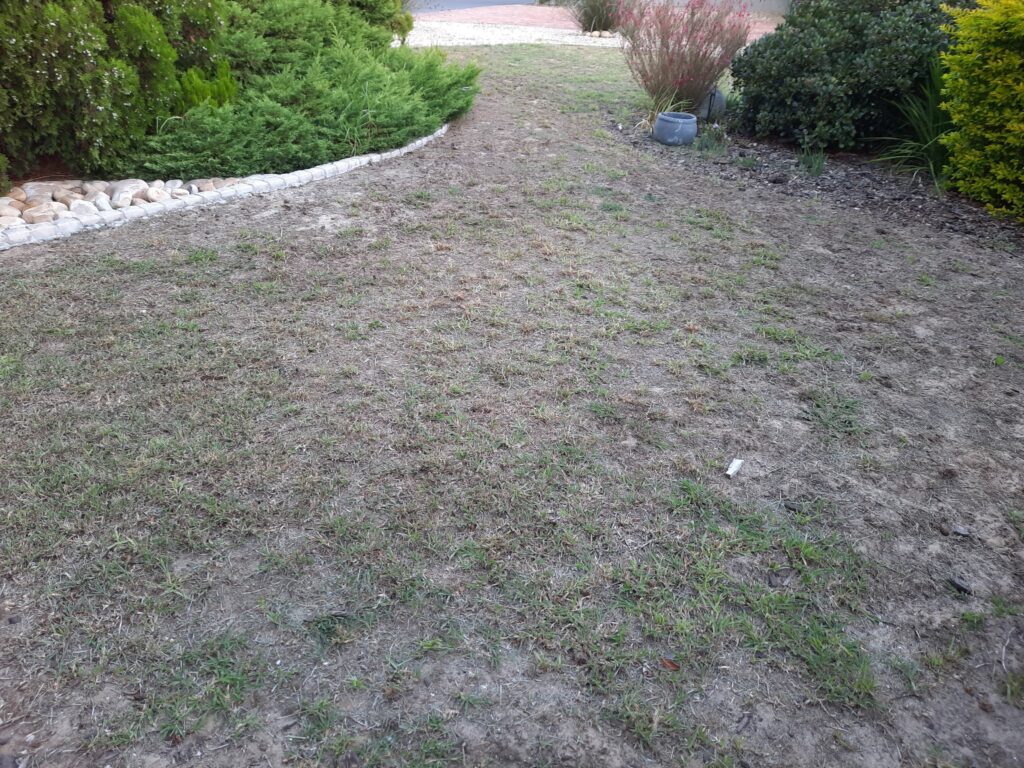
There is nothing quite like a new garden project to get me all motivated to spring into action. My challenge is to find the time as tending to my veggie garden and working full time usually keep me pretty busy. So I put in leave to be able to focus on my garden.
I had attempted a start to the project a year ago but it didn’t deliver the desired results and so decided to shelve it for a while. We had some trees topped and trimmed at the end of April and that was the catalyst that kick-started this project.
Out with the old
There are a number of ways one could employ to remove the grass in the garden. One such method is to cover the existing lawn with cardboard and cover it with a thick layer of soil and compost in which to plant.
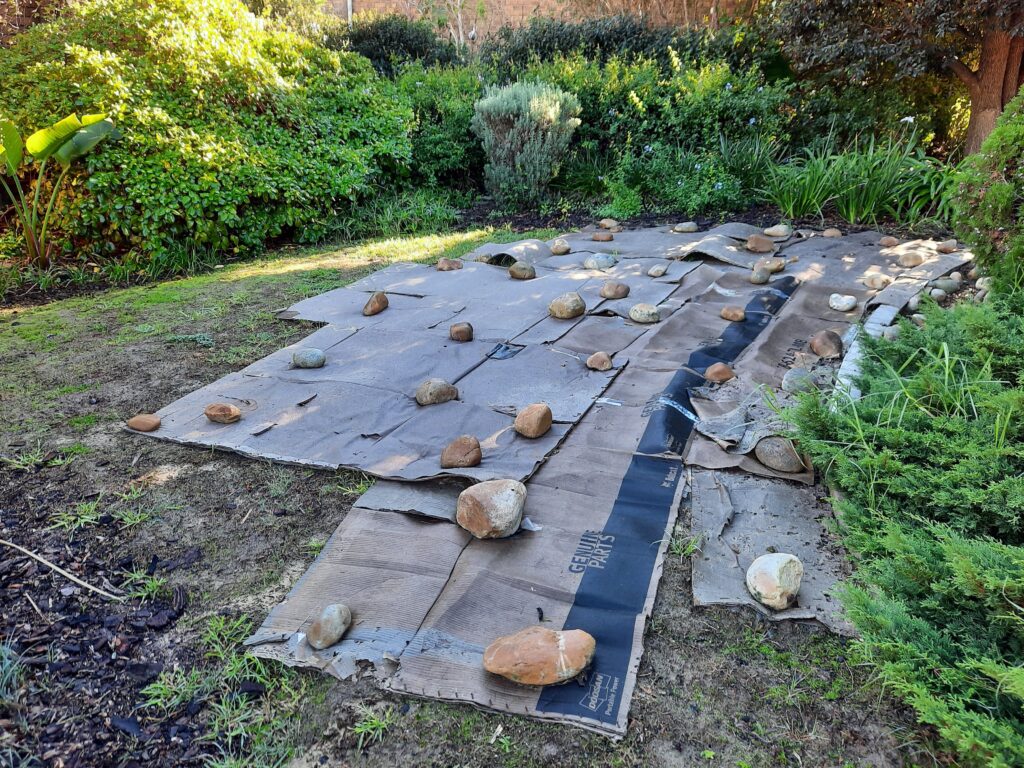
I had tried this option in autumn last year, however, this time knowing just how stubborn grass can be I went for the more labour intensive route and removed all the grass myself. If this was going to be a no-lawn garden, then there must be no lawn to begin with. It took me about four days to remove the grass which gave me a really good work-out. Who needs to go to gym when one gardens?!
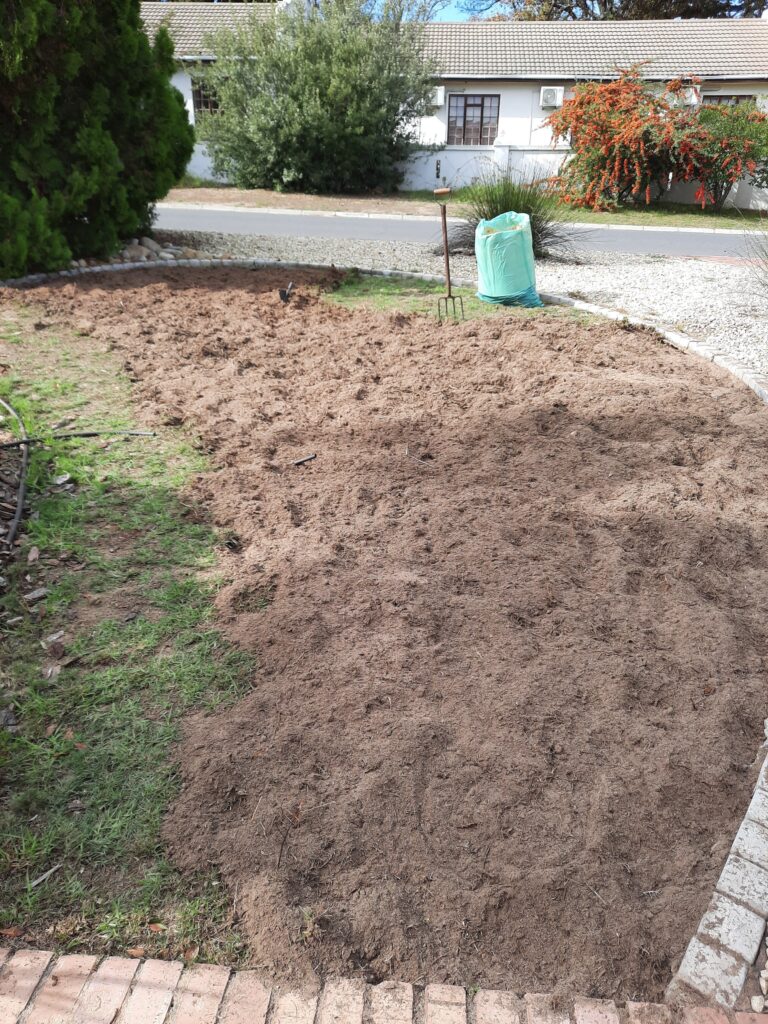
Grass roots have a nasty habit of breaking off as they are pulled from the ground. I find it is a good idea to pull them in the direction the roots are growing. In this way the chances are better to remove the whole root. Pulling in the opposite direction tends to snap the root leaving small pieces behind that can easily regrow.
Prepping for Planting
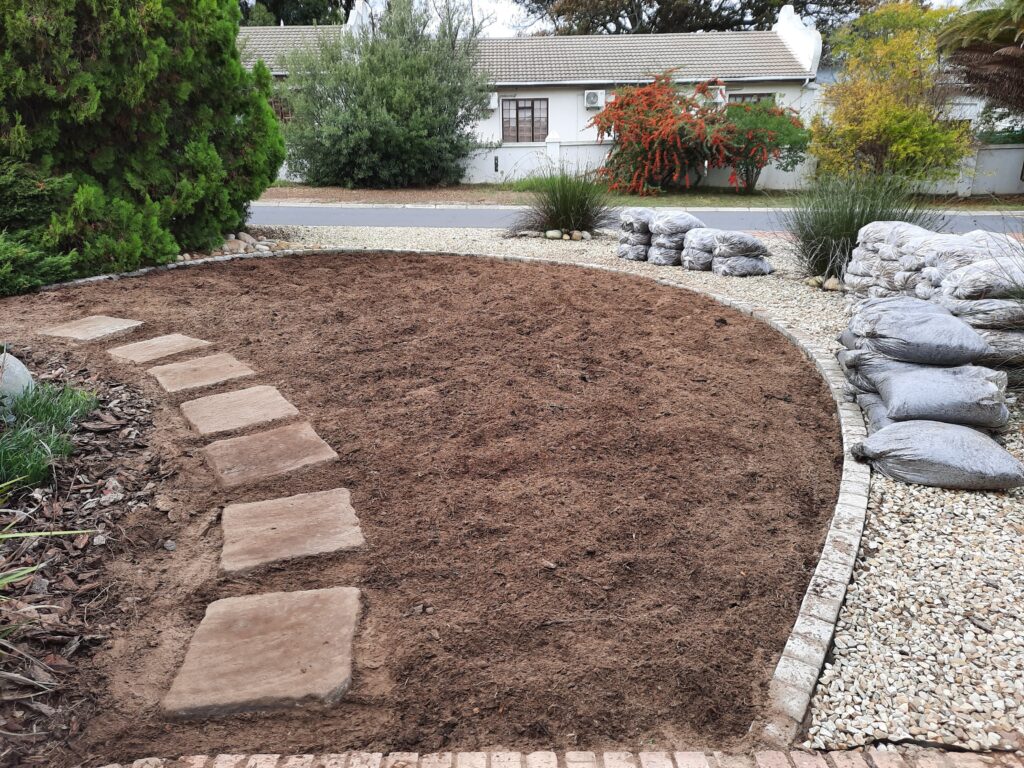
The best way to ensure your plants get a healthy start in their new environment is to ensure the soil is good. My garden has very sandy soil. Sand does not retain water and holds almost no nutritional value for the plants. This meant I needed to add compost – a lot of compost. I must have used at least forty bags of the stuff. Compost is really a soil conditioner which helps sandy soils retain moisture. In addition, it contains some nutrients like nitrogen, phosphorus and potassium (the N-P-K seen on fertiliser bags) as well as micronutrients. Micronutrients such as copper, iron and manganese for instance help in the photosynthesis process of plants.
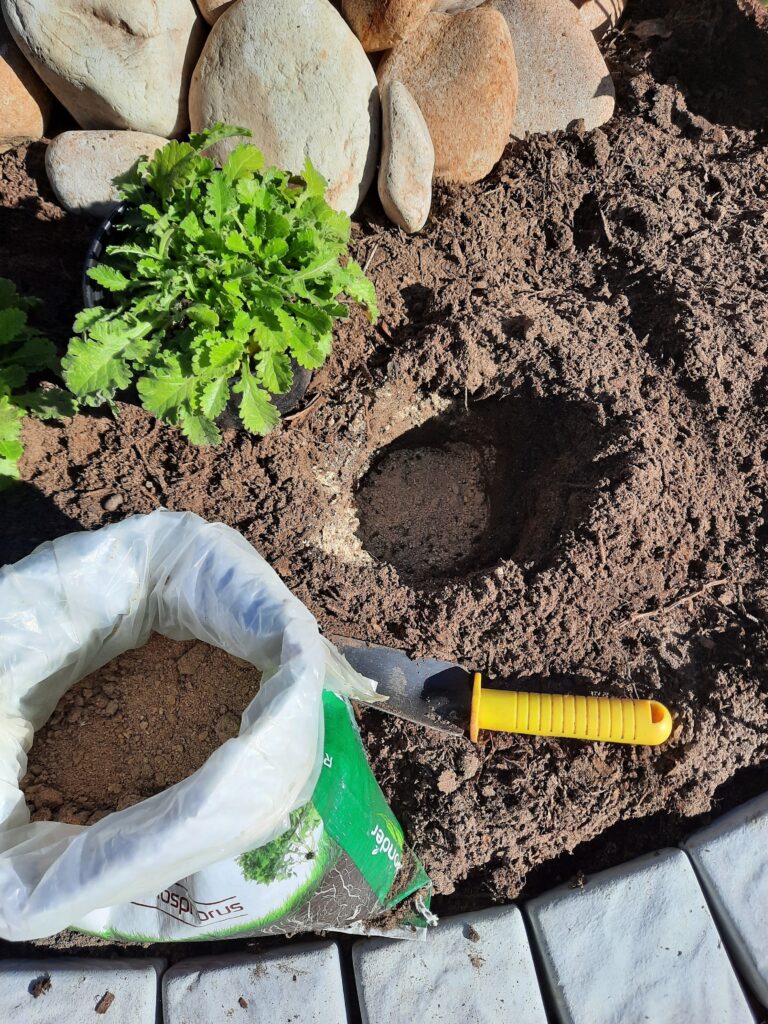
Bone meal is another must in my gardening regime. It is a great source of calcium and supplies phosphorus to the soil. In other words it promotes good root growth and therefore healthy plants.
Landscaping the No-Lawn Garden
Before we get to the plant selection and planting them I want to tell you a bit about the garden design. Creating garden ‘rooms’ is a landscaping technique that creates curiosity for what lies beyond. It encourages the visitor to the garden to explore further since parts of the garden are obscured from sight.
Curved lines and pathways are useful in bringing flow to the garden. This creates unity in the garden with one garden room leading into another and inviting the visitor to naturally want to explore further.
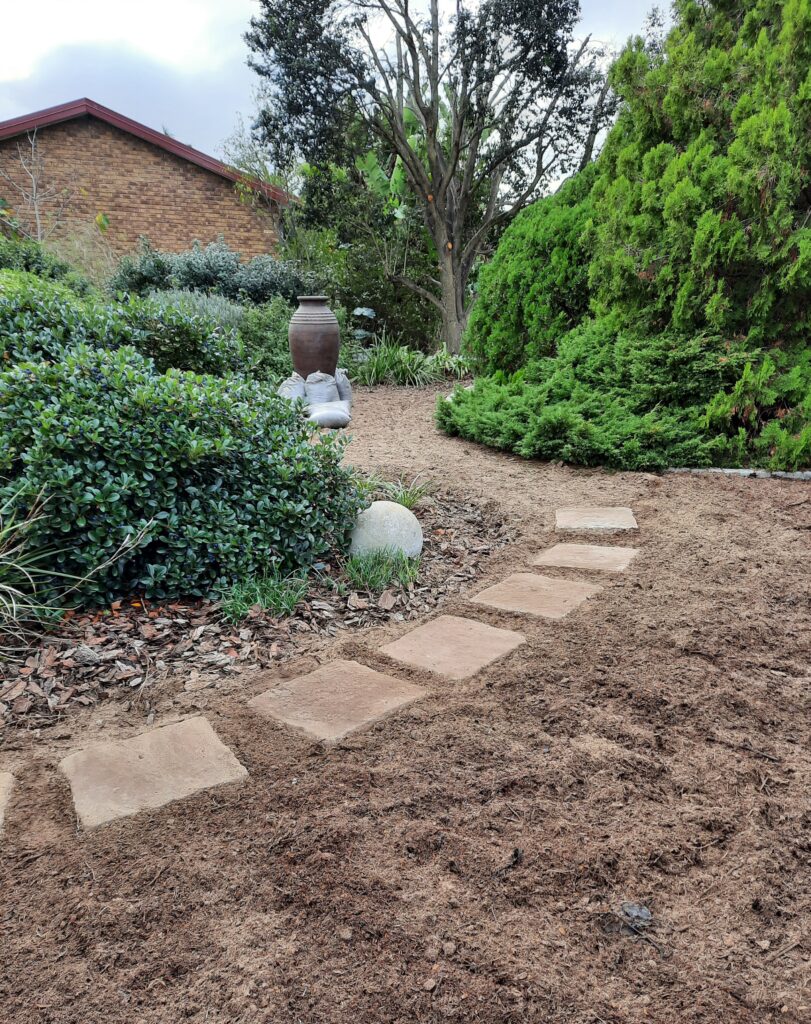
The front garden is divided into two such garden rooms. The first one which is open and can be seen as one approaches the house has a paver path curving between the existing shrubbery and the now no-lawn area . This leads to a narrowing and through into the second garden room. Here I decided to create a new flower bed in the centre with a pathway leading around it.
Landscape design is a bit like interior design but just outside. Well, that is how I see it anyway. Many of the same principles are applied. One such principle is to have a focal point and create the room around that. I chose a large pot as the focal point in the second garden room and created the flower bed and a wood chip pathway around it.
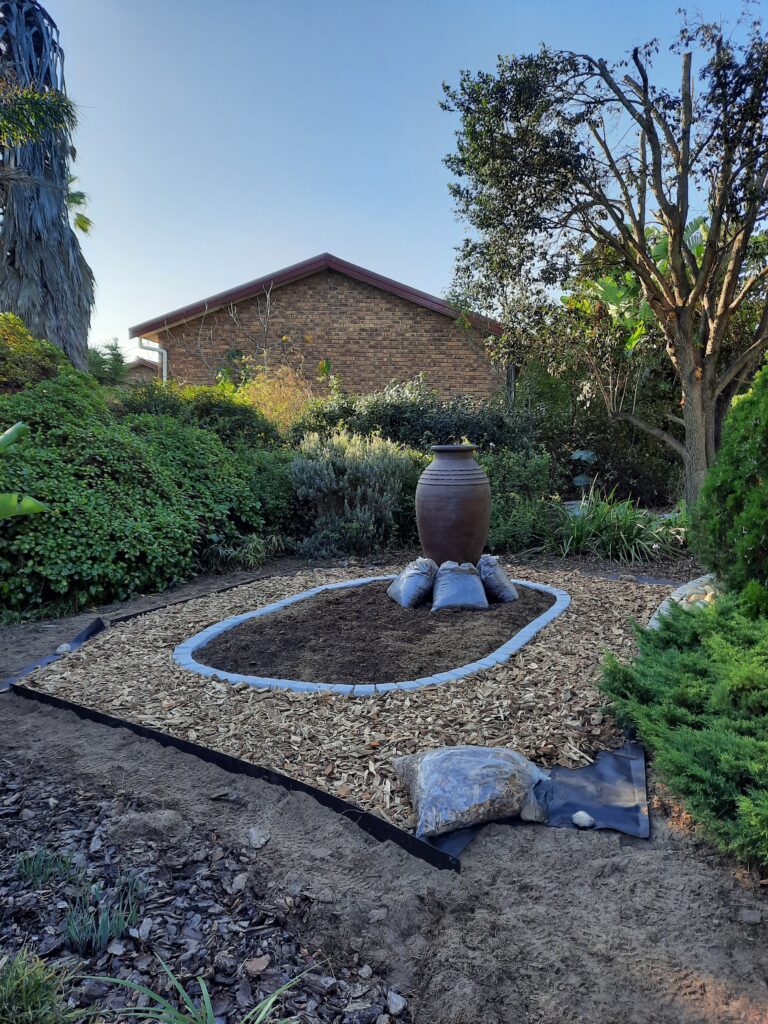
The Plant Selection
I can never go to a garden centre just to browse. There is always something that catches my eye and usually ends up coming home with me – even if it is just another packet of seeds. No-lawn garden landscaping needs plants – lots of plants. So I really had a lot of fun selecting what to grow.
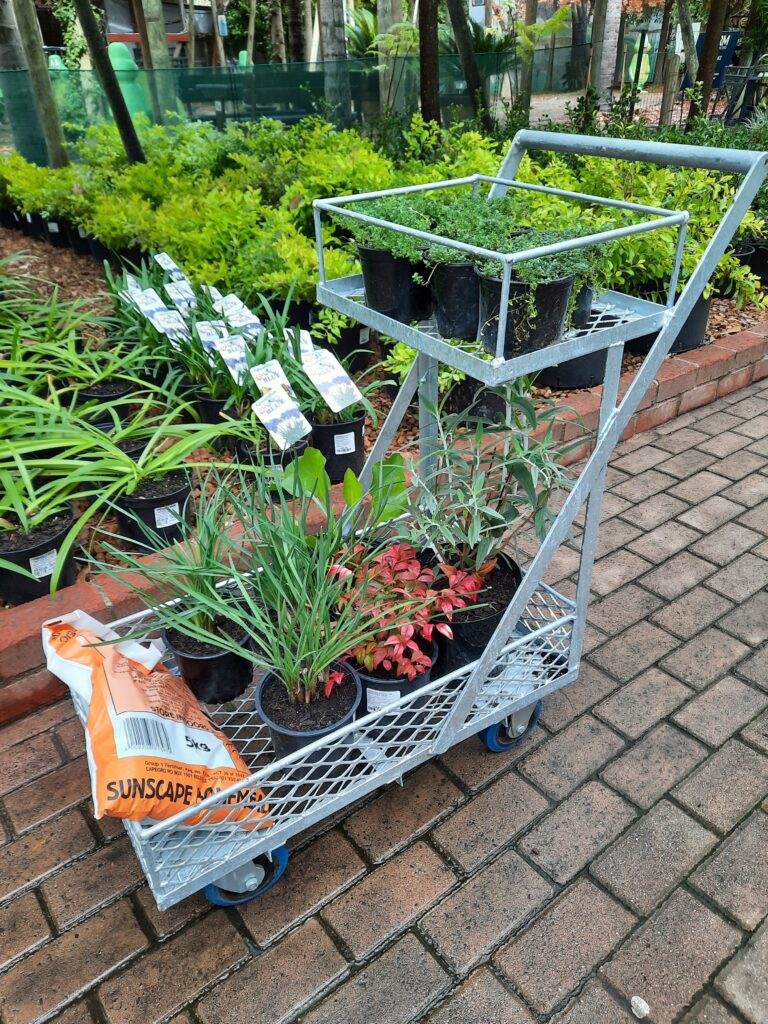
My idea for growing spekboom (Portulacaria afra ‘Prostrata’) instead of lawn came from seeing how well it worked in a neighbourhood garden. The Prostrata variety is a low-growing ground cover with a spreading habit. Spekboom is indigenous to South Africa. It is a water-wise plant that has the ability to adapt to a variety of growing conditions including the hot, dry summers we experience in Cape Town.
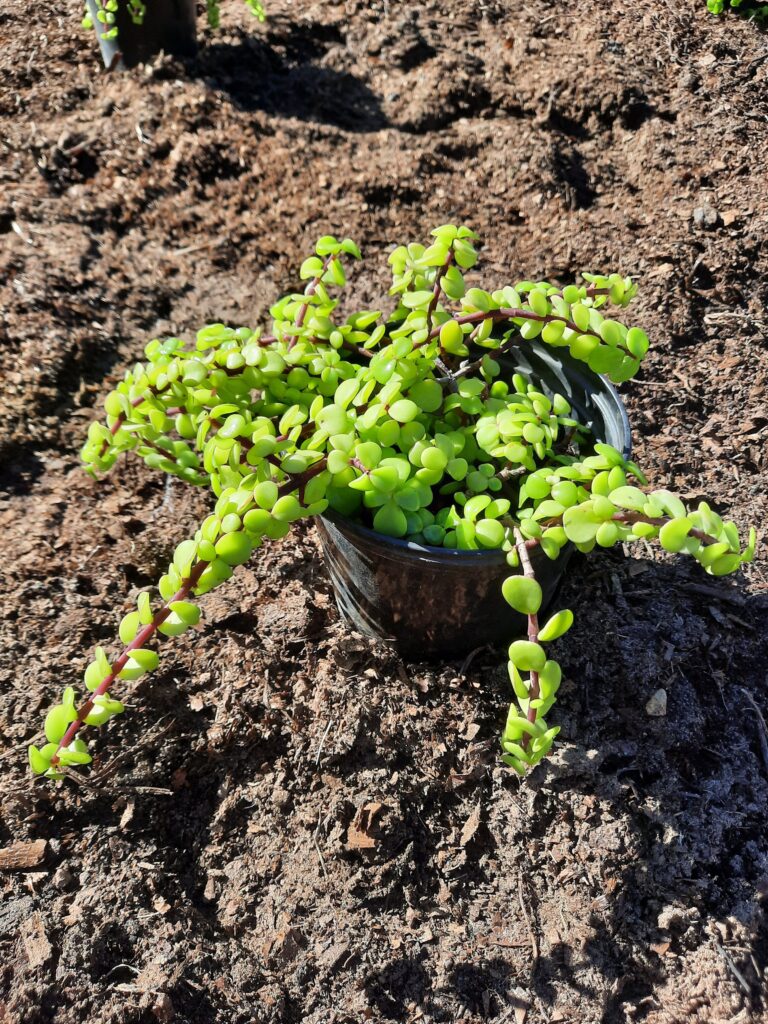
Porkbush, or elephant’s food, as it is also known is famous for its ability to absorb carbon dioxide from the air, thus doing its bit for improving the air we breathe.
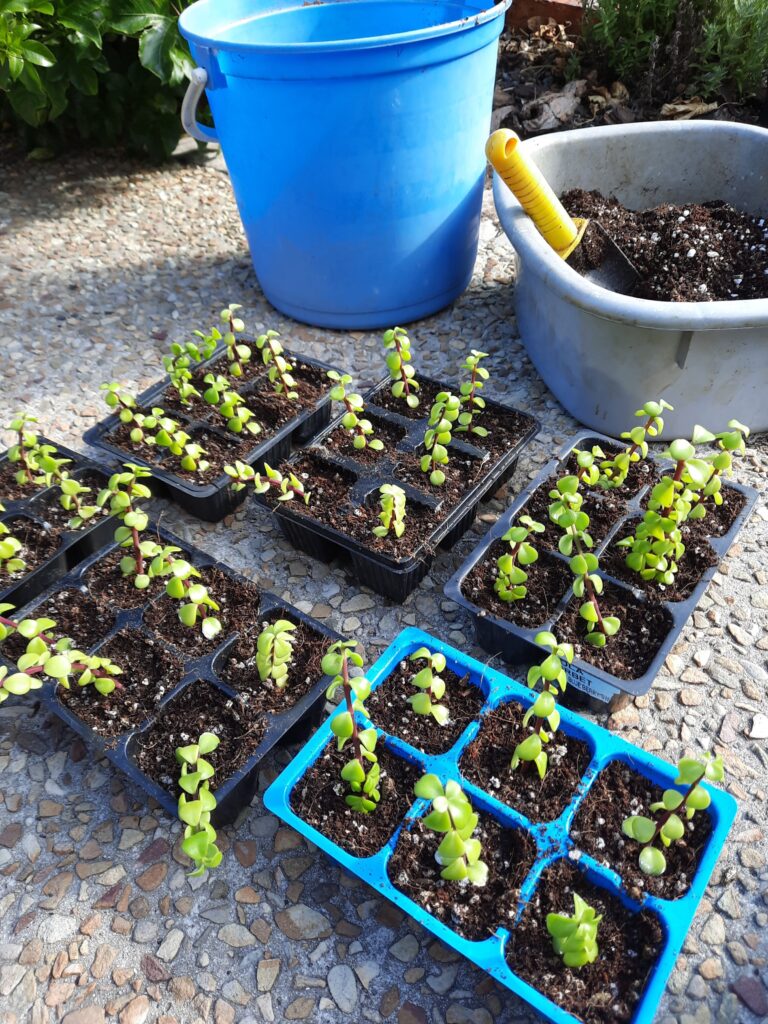
The aim is to have the whole area where the lawn previously grew in the first garden room covered by the spekboom. There are still about thirty six cuttings which, once they have grown some roots, will be transplanted into the gaps.
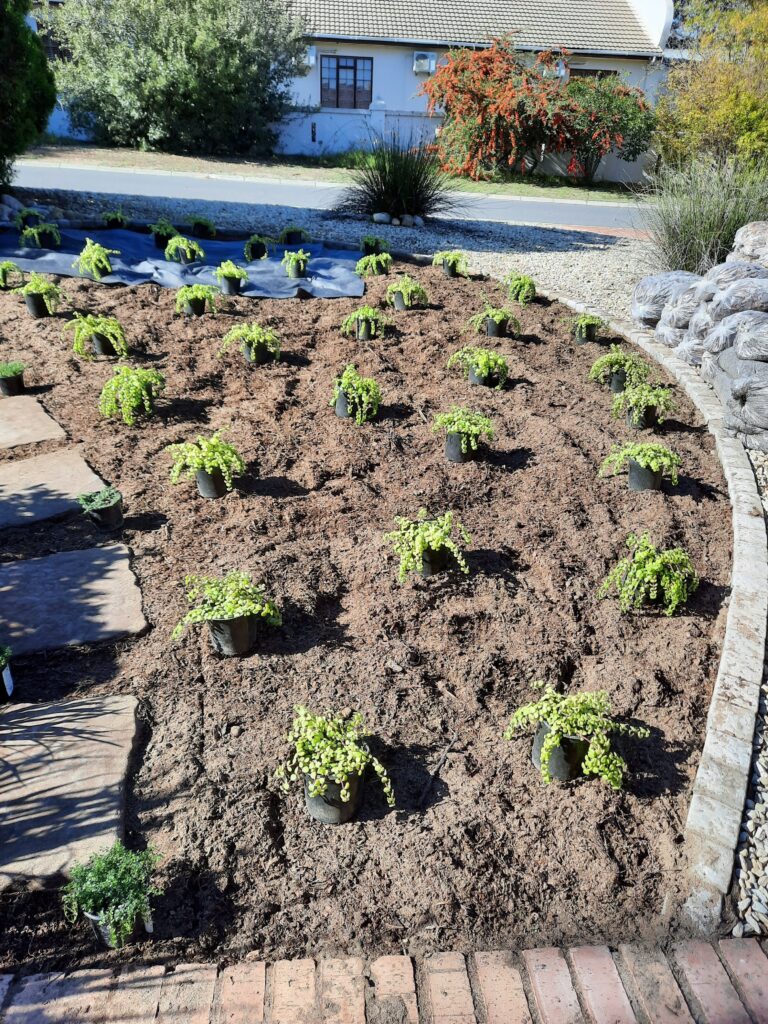
Thymus serpyllum ‘snowdrift’ is a very flat-growing species of Thyme that is only about 3 cm high. It has a creeping habit which makes it an ideal filler between the pavers of the pathway. The leaves release a fragrance when trodden on.
More Design Tips
Other important factors that tie the garden together are the colour scheme, plant grouping and repetition. I’ve selected a palette of predominantly green and silvery grey-green foliage. I added Nandina domestica ‘Firepower’ for a pop of colour and some fountain grass (Pennisetum setaceum ‘Rubrum’) for a textural contrast. Most of the plants have pink, mauve or whitish flowers. When grouping plants, it is best to do so in odd numbers. For instance the Senecio cineraria and the Statice are each grouped in threes.
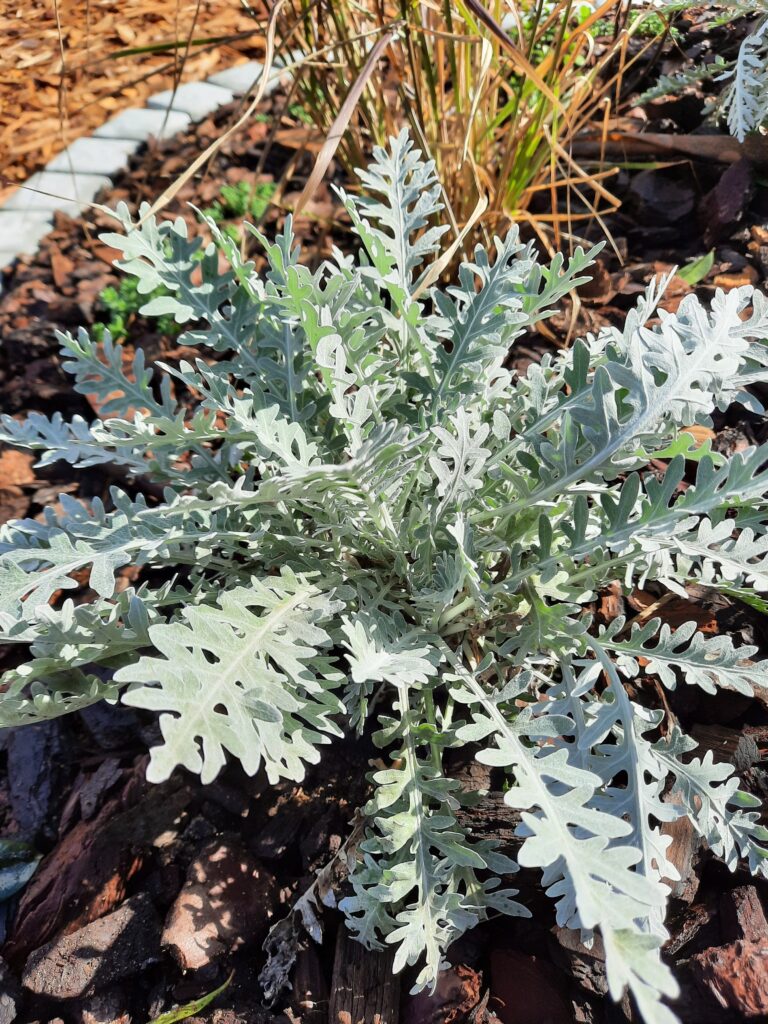
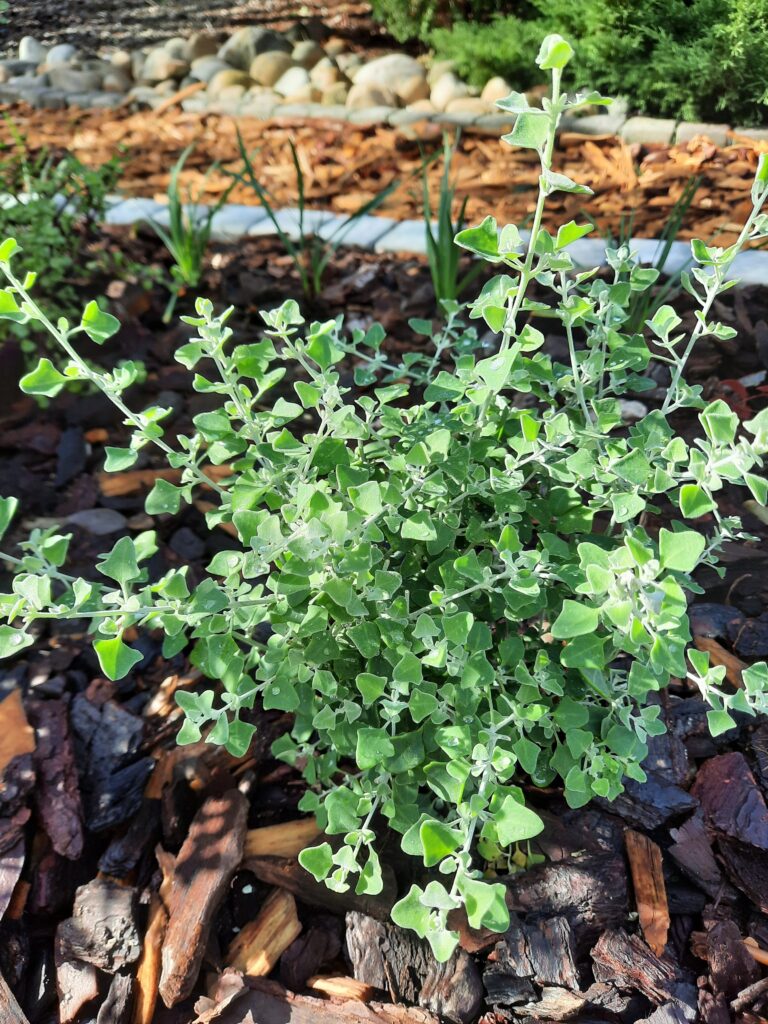
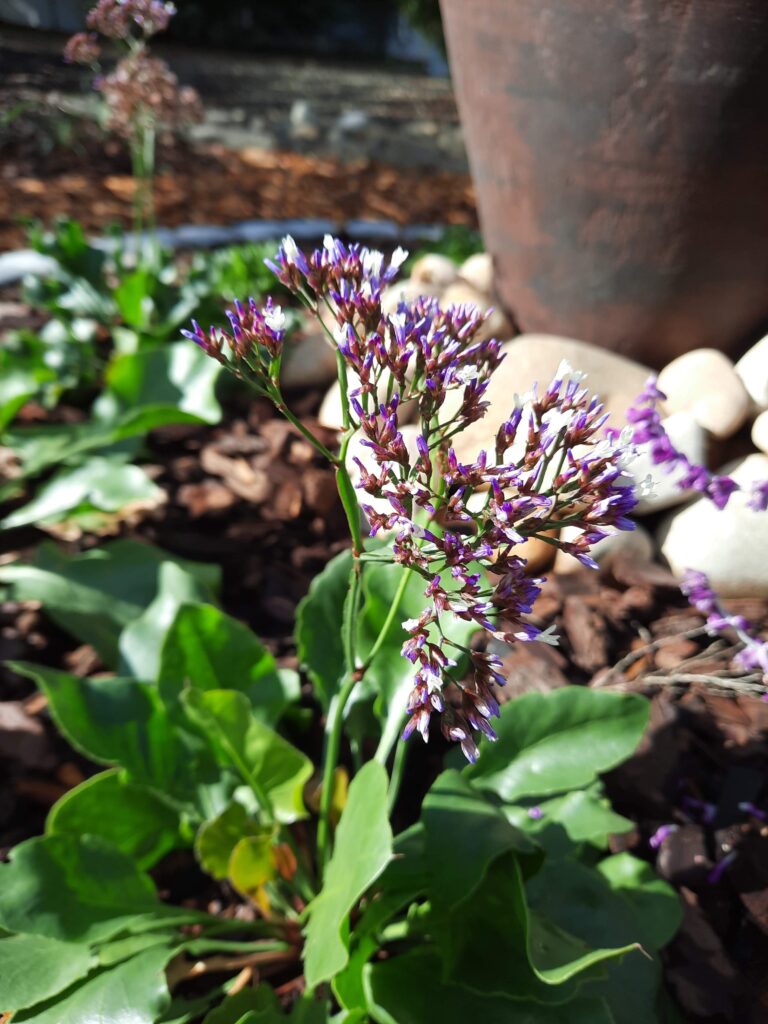
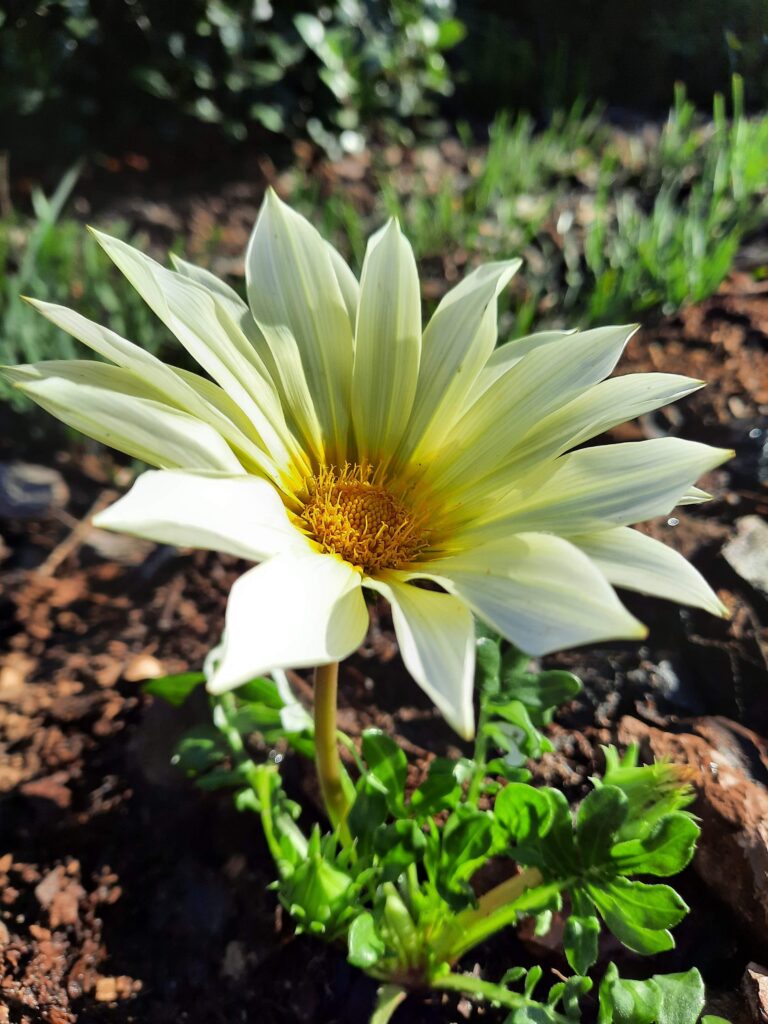
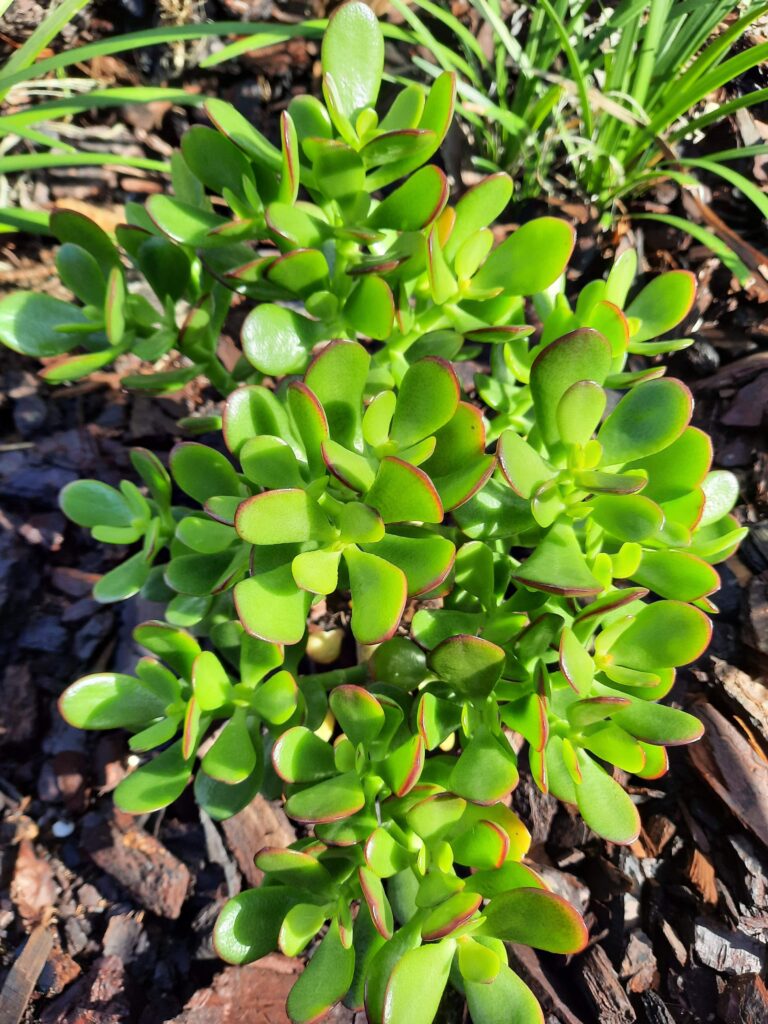
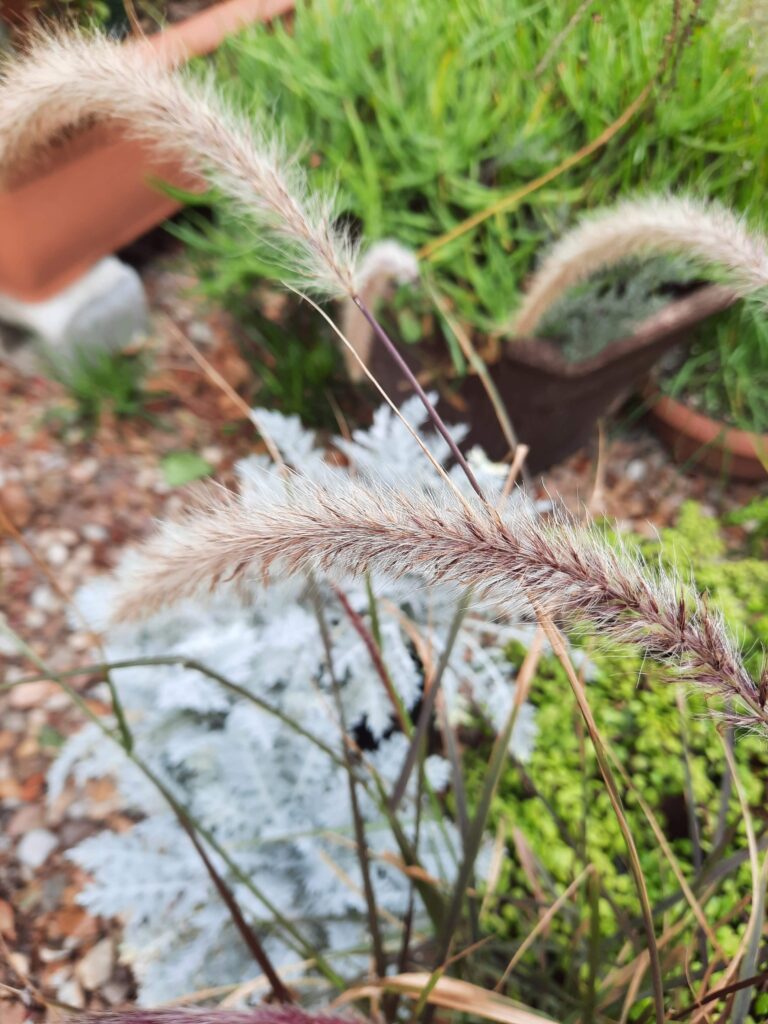
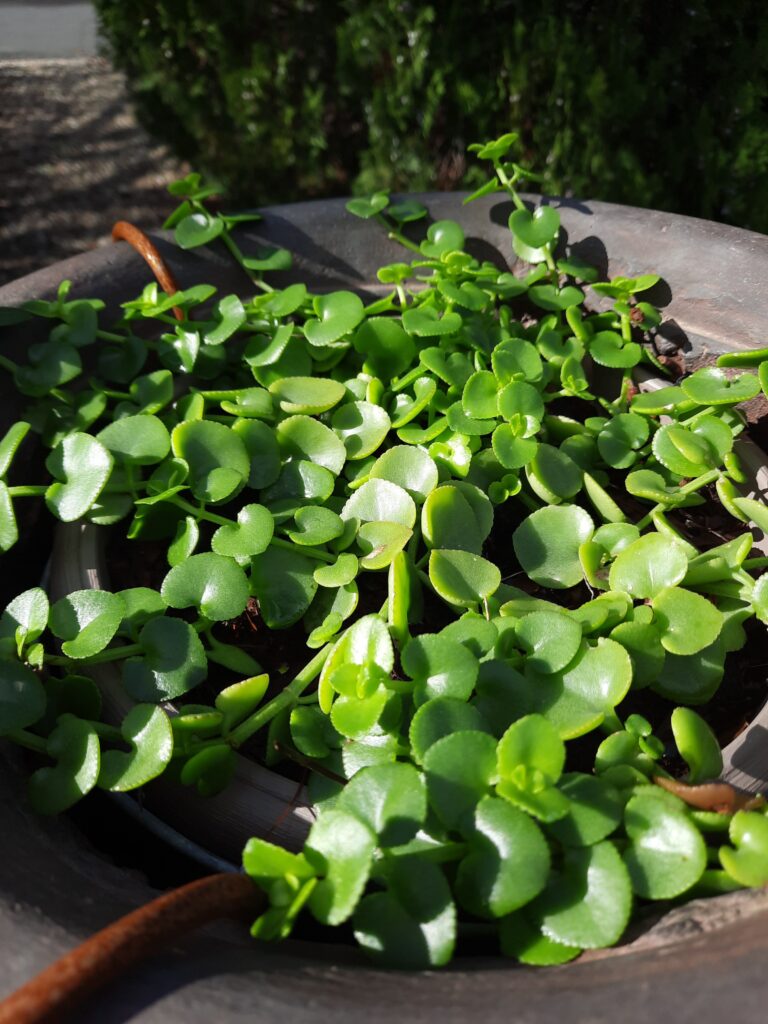

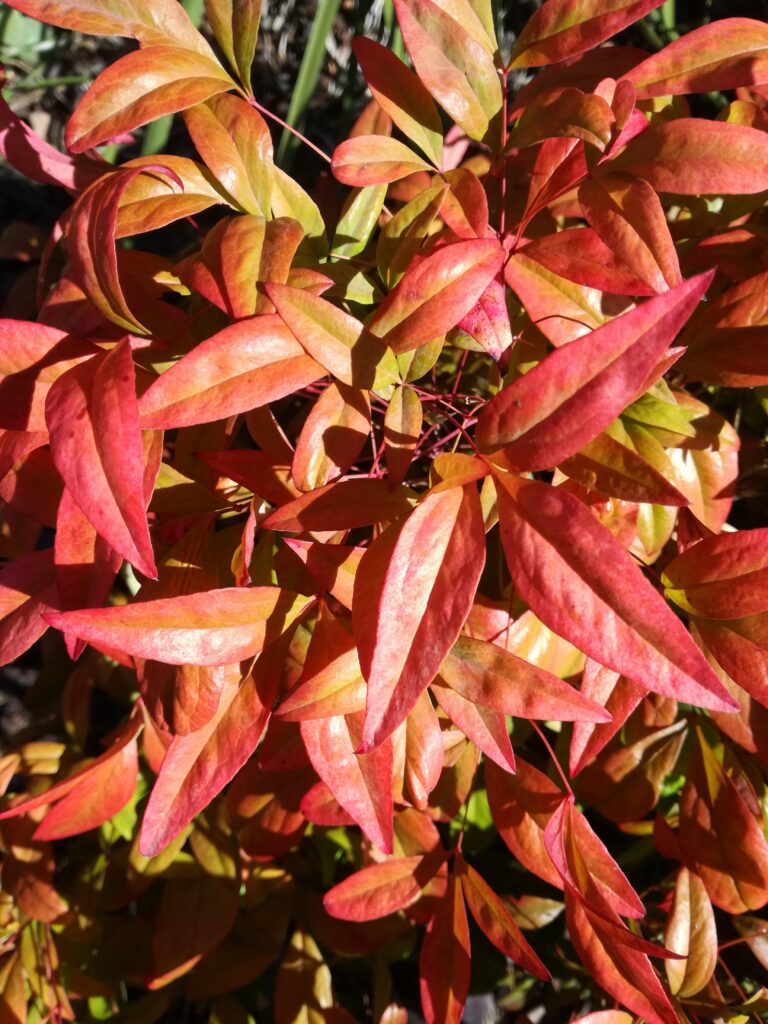
A selection of plants used
- Senecio cineraria – Dusty Miller – attractive silvery foliage
- Gazania ‘Gazoo Clear Vanilla’ – indigenous, sun-loving groundcover
- Crassula pellucidia – heart-shaped leaves; trailing habit; planted in a basket in neck of the pot
- Rhadodia hastata – Salt Bush – silvery grey leaves
- Crassula ovata – indigenous, sun-loving and water wise
- Salvia Leucantha – water wise and flowers are loved by butterflies
- Limonium Perezii – Statice – violet papery flowers
- Pennisetum setaceum ‘Rubrum’ – Fountain Grass – drought resistant
- Nandina domestica ‘Firepower’ – vermilion coloured leaves for contrast
Garden room one consists predominantly of spekboom. Although these are ground covers, they tie in well with the spekboom in the second garden room which are tall growing. The link being their leaf shape and colouring which are the same. Similarly the wild garlic (Tulbaghia violacea) lining the paver pathway is also planted along the wood chip pathway. These elements help in creating a cohesive flow in the garden.
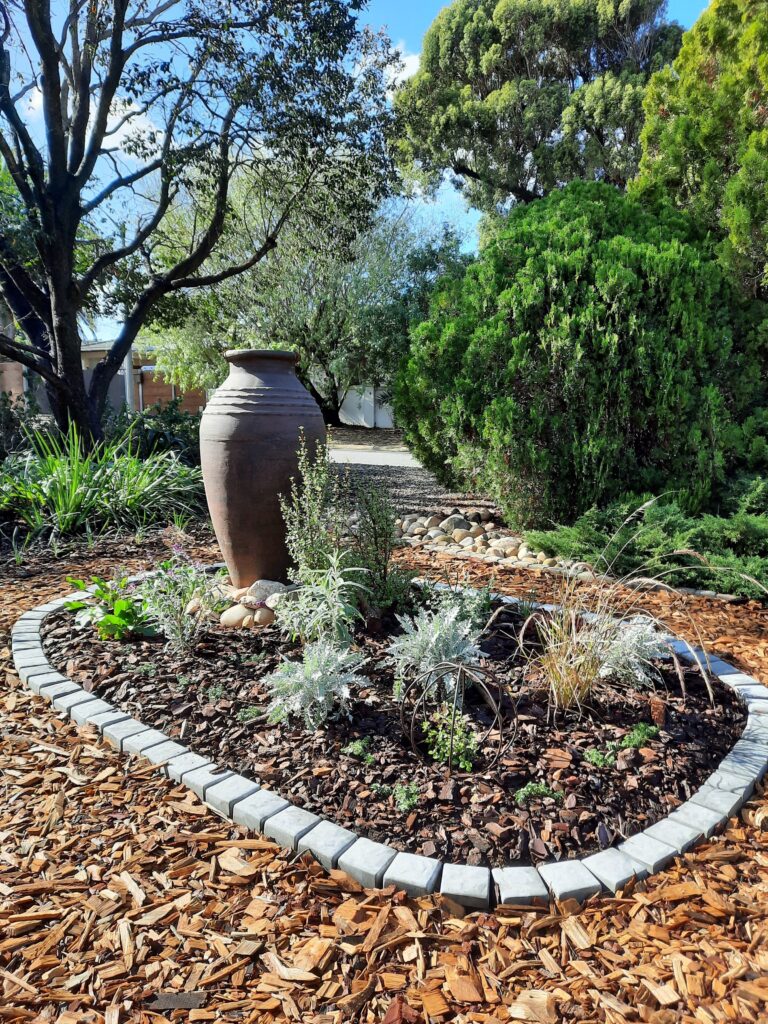
A garden is forever changing. In this case the garden makeover done ten years ago had a circle of pavers where a bird bath used to stand. I cleared the Plumbago that was blocking it from sight and created a small alcove as an extension of this garden room. It is an ideal spot for a seating area from where one can sit and view the garden. (You can read about that garden project here.)
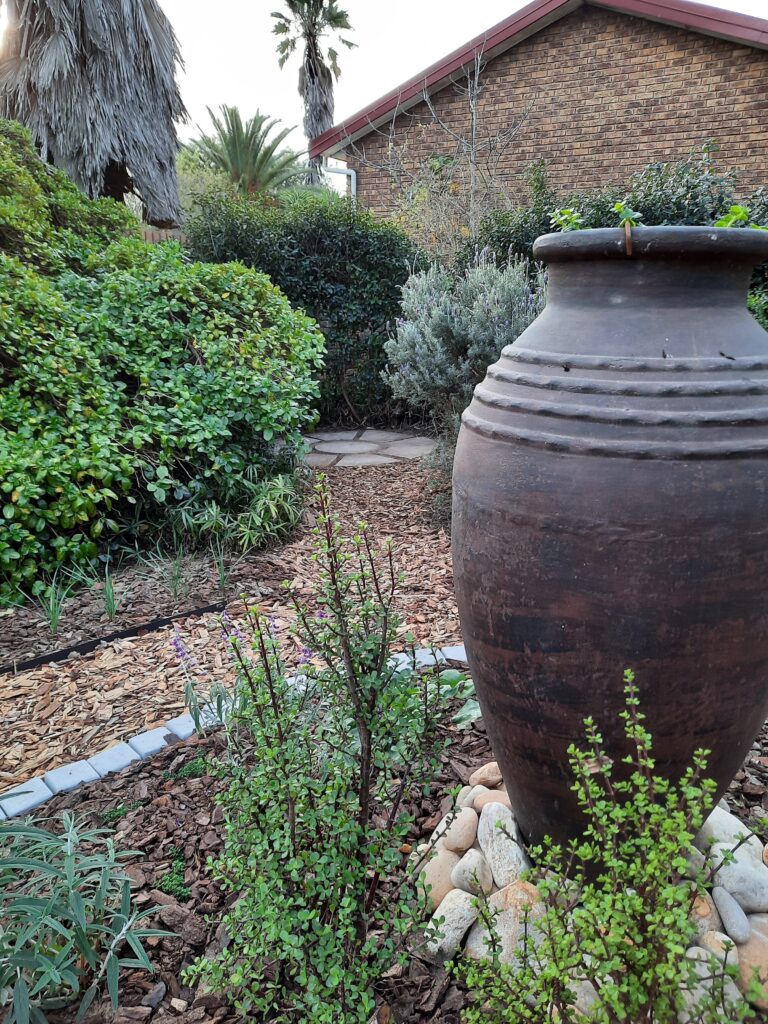
One of my favourite things about the garden is the decorative wooden bridge placed in the narrow space where one crosses from the first part of the garden into the other. I think it adds a certain energy to the scene while providing an attractive link bringing the two garden rooms together.
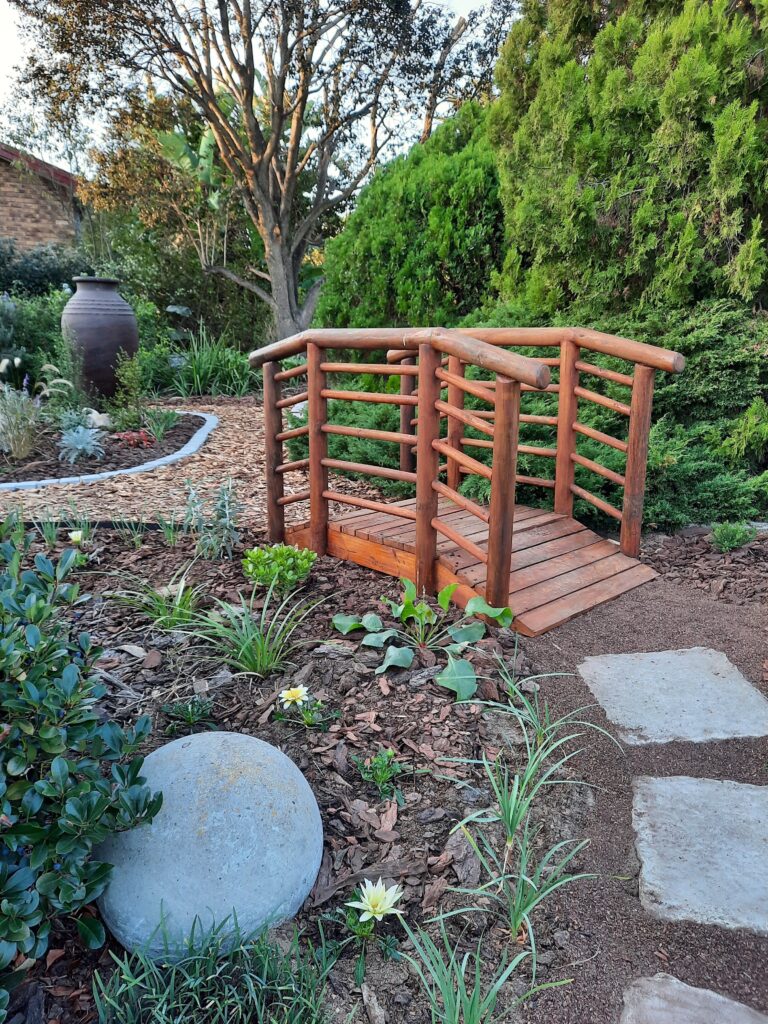
Boosting Biodiversity
Another reason people are moving to the no-lawn garden landscaping option is to actually increase biodiversity in the garden. One will have more bees, other pollinators and insects come to the garden and in that way it increases the bird life too. And I have already seen an increase in the number of birds in the front garden.
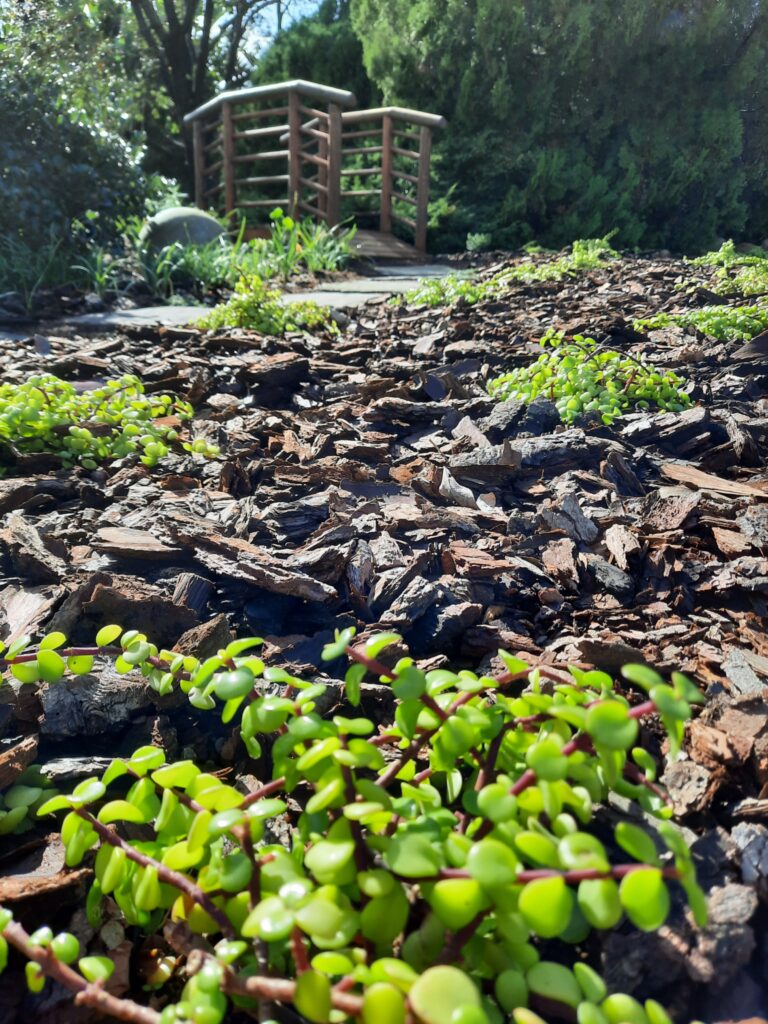
I’ve found that making this change is so rewarding that I hope it inspires you to try out your landscaping skills and create your own no-lawn garden.
Until next time, happy gardening.
2 thoughts on “A No-Lawn Garden Makeover”
The placement of all the elements have been very well considered giving the garden a very peaceful and tranquil feel. Very well done !
Thank you so much! You are right; I do find the garden very calming.
Comments are closed.